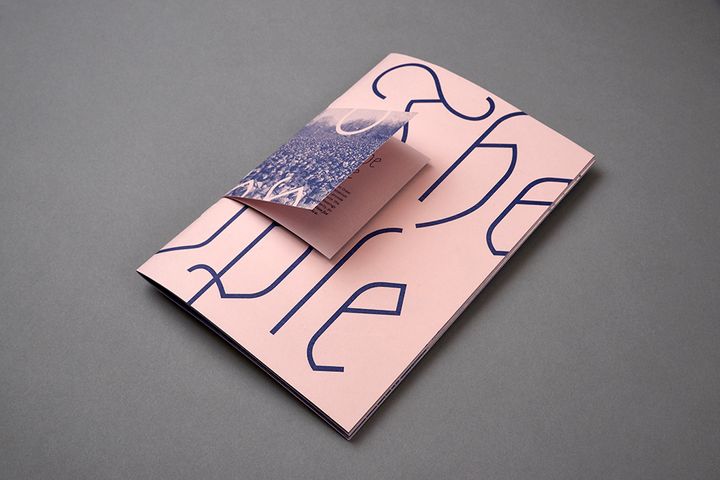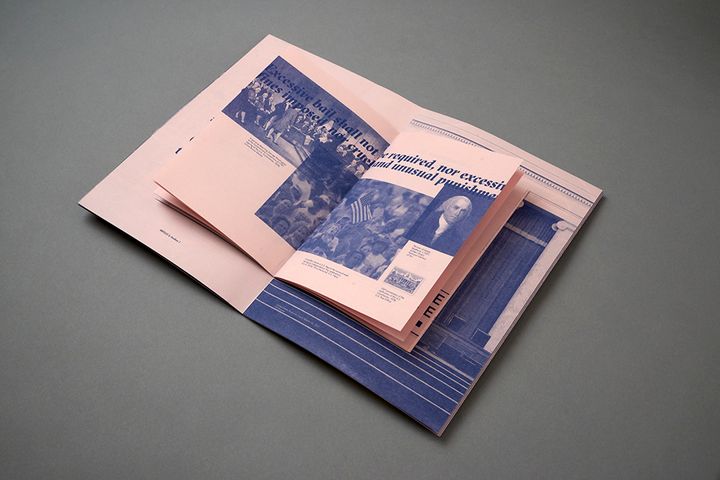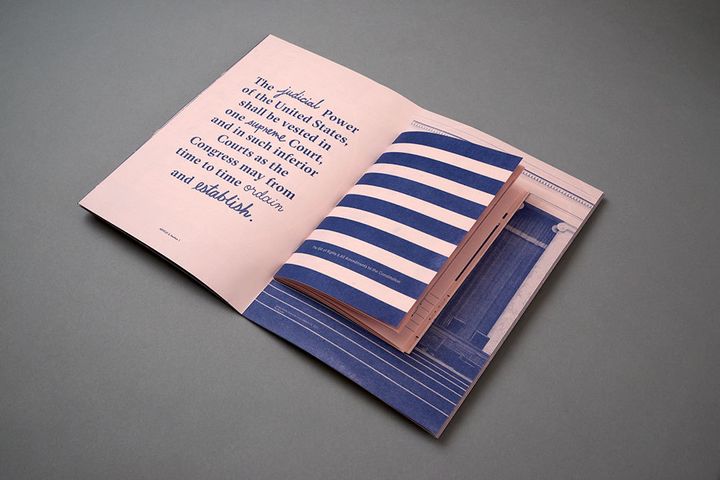
For 230 years the US Constitution has helped protect the rights of the American people by defining the framework of our federal government. But in that time it also has become a political football, and as such gets kicked around a lot. Pundits and politicians cite their fervent adherence to the Constitution, often cherry-picking one amendment out of context for polemical purposes. More recently, as this seminal rulebook for our national governance has turned into a partisan wedge, it has become one of the least understood buzzwords in our increasingly acrid political discourse.
Which is why the staff at ThoughtMatter, a New York-based branding and design firm, began to wonder: How many Americans actually have read the document even once, much less understood its meaning and purpose? Long before the father of a fallen Muslim-American soldier brandished his pocket-sized copy of the Constitution during the Democratic National Convention last summer, it had become a potent political symbol. But because so few Americans are familiar with its details, citing the Constitution can serve as something close to scripture--even for people with diametrically opposite viewpoints. Ironically, the Constitution was originally about unification, not division. Above all, it established a foundation for the merger of states with different interests, laws, and cultures. The Constitution united all citizens as members of a whole, vesting the power of the union in the people. So it was with the lofty goal of returning the Constitution to the people that ThoughtMatter set about re-branding this centuries-old text.
“I was sick of hearing politicians throwing around the Constitution for whatever purpose they wanted,” says ThoughtMatter’s CEO Tom Jaffe. “It annoyed me because it seemed many of them either hadn’t read the whole thing to begin with or hadn’t thought about it well enough to justify opening their traps.” ThoughtMatter’s overriding goal in redesigning the document was to make it accessible and enticing, to incentivize political participation. The aim was to make it colorful, enjoyable and distinctive, adding a layer of the unexpected to pique the viewer’s interest.
"For the design, one of the first things we considered was the production method,” explains Wednesday Krus, the designer who oversaw the project. “Risography was a commonly used style of printing by educational institutions, due to its high volume efficiency and low production cost. Because we planned for the redesign to be accessible, this familiar and nostalgic printing method, which also brings ease of large-scale distribution, helped us to follow through on that goal.”

“Continuing down the path of ‘access,' we utilized open-source imagery from Wikimedia commons, the Library of Congress and the National Archives. For the typefaces, we paired a modernized blackletter and serif fonts with handwritten accents. Each sample of handwriting is unique and speaks to the variety of ‘We' that the Constitution represents. The pink and blue palette is an unexpected take on the traditional red and blue. In every aspect of the book, we wanted to create something that is as surprising as it is intriguing. Each layer has something else to reveal about our country’s most important document."
“The more we talk about things we disagree about, the less we focus on our common ground,” says Jaffe. “So when people only focus on their partisan issues, they lose sense of the fact that most of the Constitution is not partisan. When you set aside the amendments, much of it is rules for how the branches of government function.”
ThoughtMatter’s design team searched the Library of Congress archives to find visual images that were dynamic and engaging in order to demonstrate that the Constitution is a living, breathing thing. And they went a step further by designing icons that add a level of modernity and appeal to younger readers.

“Basically, we wanted to encourage people to read it and get copies into as many hands as possible,” says Jaffe. “We believe design has a role in promoting social change. There’s more to design than just how something looks; there’s the idea behind it. And we wanted to make it something people would want to look at, that wouldn’t just be type, like most versions are.” Jaffe said. “It’s not meant to be solemn.” The distribution of the ThoughtMatter version of the Constitution—supported by a Kickstarter campaign—is simple: Every backer gets one copy and another one is sent to a school or library. In addition, all 100 US Senators have been sent a copy. (The initial Kickstarter goal of 8k has been met and they are now trying to reach a stretch goal of 15k.) “The Constitution rises above partisanship,” says Jaffe, “We’re a design firm, not a political consultancy, but we think the Constitution belongs to everyone. It’s America’s foundation and it’s too important to be left to politicians.”
